When it comes to electric vehicles (EVs) their capabilities and how they’ll be charged there always seems to be more questions than answers.
An Office for National Statistics survey published last summer found that the most significant barrier to purchasing an EV surrounded the battery, and specifically a perceived lack of charging stations, as well as concerns that drivers would not be able to recharge them when they really needed to or that the battery range was too short. Obviously technology is changing all the time and responding to some of these worries. But it’s not just consumers who are concerned. Forecourt retailers are too having to decide whether to be an ’early adopter’ and jump straight in or to wait and see. After years of dependence on the internal combustion engine and fossil fuels, alternative fuels for cars including electricity, are a bit of a head scratcher. Indeed, one leading forecourt retailer admitted to Forecourt Trader that they weren’t doing anything about electric charging at the moment as the one thing they couldn’t understand was that essentially electric was a simple ’plug in’, but it seemed to cost a huge amount of money. That said, there are solutions out there that aren’t costing retailers a penny.
Charging firm InstaVolt is currently installing rapid charging stations on forecourts for free, saving operators from having to make a significant capital outlay, and even giving them a rental income for the use of the space. But there is a catch in that you commit to leasing out your parking spaces for 15 years.
Penny Petroleum, Certas Energy and Harvest Energy are just a few of the big names that have opted for the InstaVolt solution; while clients outside the forecourt sphere include Duncan Bannatyne’s gym empire and several local authorities that have realised they can install charging stations without the taxpayer paying a penny.
CEO Tim Payne says: "Some businesses we speak to can’t quite get their heads around the idea of us installing chargers for free. We’ve had a few councils turn us away initially because they think it’s too good to be true.
"We want to reassure fuel retailers that the implications of the new Automated & Electric Vehicles Bill needn’t cost them a penny. We can handle everything from obtaining planning permission to upgrading the chargers as technology evolves. What’s more they can actually make a rental income from it."
Obviously thorough site surveys have to be undertaken before chargers are installed and Payne says surveyors pay close attention to hazard zones, review Explosion Protection Documents (EPD) and obey all safety requirements such as placing the charging equipment the required distance from the fuel dispenser, keeping the required distance from LPG tanks etc. However, as a result of these surveys, some sites are deemed as not viable. Furthermore, in some cases InstaVolt is unable to secure the necessary electricity supply to power its chargers at an economically viable cost. But Payne says that as the electricity grid is evolving and capacity becomes available, they constantly revisit this issue. "For this reason we consider this second factor as a temporary blocker, not a permanent one," he explains.
When it comes to leasing space on a forecourt, commercial arrangements are subject to negotiation with a number of factors influencing this. Current leases range from 10 to 30 years.
He adds that putting EV chargers on forecourts can actually bring more benefits to fuel retailers and motorway services: "Retailers can expect to see increased dwell time as drivers typically spend up to half an hour waiting for their vehicle to charge, spending money as they do. Drivers are actively seeking EV charge points too so forecourts can benefit from increased footfall."
InstaVolt’s charging stations are available for all EV drivers to use on a pay-as-you-go, no- subscription basis. Drivers simply tap their contactless debit card and charge up. "We believe in offering drivers a simple and transparent pricing structure," says Payne. "For that reason, all our chargers cost just £0.35p/kWh. There is no connection fee, no minimum charge, no time-based element and no monthly subscription cost. You pay only for what you use. Furthermore, drivers can use our charging stations using only a contactless debit or credit card. No smartphone or dedicated RFID card is required."
Looking to the long-term future of EV charging InstaVolt believes forecourts have a huge part to play. And according to research from the Society of Motor Manufacturers & Traders (SMMT), lower running costs, cheap car tax and purchase incentives are the biggest reasons UK drivers would be likely to buy an electric car. But range anxiety remains the biggest deterrent to buying EVs. The same survey found that almost half of potential EV drivers (48%) would be worried they wouldn’t be able to find an available, working and compatible charging point.
Payne says: "The issue is clear; sales of electric cars will never reach their potential unless manufacturers introduce an affordable range of EVs with a 300 mile range and the UK commits to providing easy access rapid charging for everyone."
The oil majors are getting in on the EV charging action too. Shell Recharge, for example, was launched last October, with charge posts at 10 selected UK service stations in Greater London, Reading and Derby. These are located in areas where there is an established population of EV drivers, and where the service stations have space for drivers to park and charge their vehicles, as well as offering facilities while they wait, such as of snacks, coffee, free wifi and toilets. Jane Lindsay-Green, Shell UK Retail future fuels manager, says: "On-forecourt charging provides an essential and convenient charging solution for EV drivers, and we have had a really positive response from our customers."
Polar landscape
Chargemaster declares itself to be the UK’s largest provider of EV infrastructure, both manufacturing and providing charging points, and operating the UK’s largest EV public charging network, called Polar.
The company’s director of communication and strategy, Tom Callow, says there’s an opportunity for retailers to have a rapid charger installed on their forecourt at no cost, with the additional incentive that it will undoubtedly attract marginal business from EV drivers who want to buy food or drink and other items while they are topping up for 20 minutes or so.
But he adds that the key to rolling out rapid charging infrastructure is having the power available: "Forecourts can begin by getting a free site survey, which Chargemaster can carry out, to check if there is sufficient power available. In addition to the power, forecourts should consider the infrastructure itself. Our Ultracharge rapid charger has an intuitive user interface, with a large touchscreen making it easy for anyone to use, and is just 1.5m high, making it the most compact rapid charger on the market, and one which typically does not require planning permission."
Callow says one potential pitfall for a forecourt would be installing a rapid charger that is not used, for example by being on a network that EV drivers do not really use. "While rapid chargers can have contactless payment devices for ’ad hoc’ access, the benefit to forecourts will be footfall, which the Polar network can deliver with over 40,000 EV drivers using its charging points and that number is growing every day. A rapid charger is of no use to a forecourt if it is not used on a regular basis."
Callow worries that if forecourts hesitate, they will miss out on a burgeoning opportunity. "There are no imminent changes in standards on the horizon, and the rapid chargers being deployed today will be servicing the EV market for many years to come," he says. Another ’plus’ point for Chargemaster is the fact that the AA has linked with the firm to help any of its members who already own, or who are considering an EV. The AA will use the 6,000-plus nationwide Polar EV charging network as an emergency back-up charging solution for its patrols if an EV driver runs out of charge.
The announcement follows an AA-Populus survey of 19,308 drivers which showed that a third of AA members aim to switch from diesel and petrol for their next car purchase.
green revolution
Christopher Gruen is managing director at NovAzure Consulting, a firm that helps companies to become more competitive through the green and digital revolution. Its directors and a number of its consultants worked in the oil majors, such as Shell. Gruen describes EV developments as both a challenge and an opportunity for forecourts.
"If you are considering building an EV charging point, you should consider how long a customer typically spends on your site," he says. "If you are pushing a strategy of getting a customer on and off your forecourt in five minutes and you have no space to set up an EV charger infrastructure because queues could mount up quickly on your small forecourt, then you should be careful. But, if you have a service station off a motorway with sufficient space, a fast-food restaurant as a co-locator and a strong wifi signal, this may be a perfect starting point to install a number of rapid chargers."
As previously mentioned, there are other indirect benefits of adopting EV charging to consider. "By making your service station fit for the future and making the right investments, the resale value of your service station rises," says Gruen. "Another key benefit is the increase in positive reputation. Making investments around EV chargers on a forecourt at the moment produces headlines."
So, although it’s still early days for EV charging, there certainly plenty of options.
Headaches ahead for intelligent mobility, but good for the elderly
For most of the 20th century, transport had looked fairly similar, but we’re now at a time of potentially massive innovation. At a recent conference entitled ’Next steps for intelligent mobility: autonomous vehicle, future-proofing infrastructure, and developing a smart transport system’, presentations covered the many challenges faced by the transport sector as the government tackles its 80% C02 reduction target by 2050. Transport currently produces about a quarter of the C02 for the UK. No internal combustion engines will be sold from 2040 in England. At the conference the move to electric vehicles was a given, the issues being discussed were around intelligent mobility and smart transport systems; about autonomous vehicles and connected autonomous vehicles (CAVs); the headache for insurers as to who is liable in such vehicles in different situations; Mobility as a Service (MaaS); the importance of data but also the concern that the broader the connectivity, the greater the risk of systems being hacked. In fact vehicle manufacturers and OEMs in the future may focus on data for their profitability.
Transport funding is also an issue. Increasing fuel efficiency has meant that revenues from fuel duty are dropping. "With the projected trend of electrification, that in turn will decrease further the money received, said Benedict Taylor, head, Transport and Infrastructure, Government Office for Science. "For example the domestic VAT rate of 5% on electricity is considerably lower than for fuel duty. This is concerning in terms of revenue... and does raise the question of how government will pay for future transport issues...
"We will see increasing automation; and increasing number of EVs in the market. We’re also going to see the UK population growing..."
He said the big positive would be for the elderly and disabled "automation potentially offers access to services they don’t have."
Charging - home or away?
Tim Payne, CEO of InstaVolt, believes there’s too much of a focus on home charging and not enough on en-route ’location’ rapid charging.
"Nearly half of all UK households do not have access to off-street parking. This immediately excludes more than 13 million car owners from being able to charge at home. Couple this imbalance with the factor of ’range anxiety’ and it’s a recipe for failure. If we can improve access to rapid charging in public, people will be much more confident in buying and driving EVs.
"And that’s exactly where the UK’s petrol stations come in. Forecourt traders play an even bigger role than I think any of us have given them credit for in this bid to increase use of EVs and, ultimately, improve air quality.
"People don’t fill up their cars with petrol or diesel each night they stop to fill up as and when they need to. Forecourts hold the power to make it just as easy to do so with EVs. They have the potential to become the backbone of ’location charging’, enabling quick top-ups that fit around EV drivers’ lives, boosting range and providing more consumer confidence."
A report by the National Grid found that in a world where almost all cars are electric, too many domestic charging points would cause ’network stress’. One potential solution it suggests would be to build a few thousand super-fast charging forecourts of over 3Mw capacity.
Retailer viewS
Oli Lodge, managing director of Rusdene Services, started speaking to InstaVolt last year as he was impressed by the fact the company installs the chargers for free and pays partner landlords a rental income for the use of the space. "It was a complete no-brainer," says Oli. "To be able to install the EV chargers without that capital outlay made perfect sense."
InstaVolt installed its first two rapid DC chargers at Rusdene’s Lee on Solent site. The company took care of everything from planning permission right through to installation and testing. Since then, Oli says he’s seen footfall increase with a new audience. "It’s bringing electric car drivers to us and we’re seeing new faces all the time. What’s been a real business benefit is that while their cars are charging, typically for up to half an hour, they’re coming in and spending money in our café and retail area. It’s unlocking a whole new era in dwell time and that’s only going to increase as more people drive EVs."
InstaVolt lists all of its chargers on popular EV website, Zap-Map, so drivers are actively seeking out Oli’s forecourts. He says as a result, he’s hardly had to promote it at all.
Elsewhere, Cornwall Garage Group is working with InstaVolt to install and maintain DC chargers at nine of its sites. Director David Whistler says: "The automotive landscape is changing and it’s important for us to be ahead of the curve."
He adds that signing with InstaVolt was an easy decision: "Using InstaVolt meant we haven’t had to shell out the capital expenditure. We don’t need to worry about maintenance costs either, that’s all taken care of."
Rapid versus fast chargers
Rapid chargers:
These are DC (Direct Current) chargers which deliver a high amount of power quickly and safely, making them the ideal method of delivering power to a vehicle in the shortest amount of time possible.
There are two types of chargers available: 50kW and 150kW.
Currently most electric cars only charge on 50kW but future electric vehicles with larger batteries will charge at a faster rate and will require the faster 150kW equipment to achieve the quickest charge possible.
50kW: 20-40 minutes (based on a 30kW battery)
150kW: 20-40 minutes (based on a 90kW battery).
The only restriction on the 150kW equipment is the available capacity within a building as 150kW (240A 3 phase) of power is considerable and may need a new grid connection.
Fast Chargers:
These are AC (Alternating Current) chargers delivering a medium amount of power. They are the ideal method of delivering power to a vehicle when there is a possible dwell time of one-to-two hours.
There are two types of charger available: 7kW and 22kW.
Dual 7kW: three-to-four hours (based on a 30kW battery)
Dual 22kW: one-to-two hours (based on a 40kW battery).
Source: Novasure






















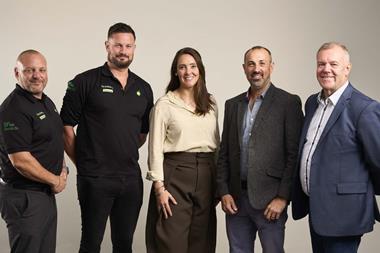
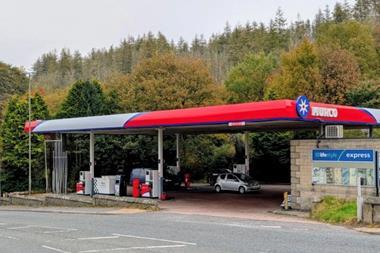

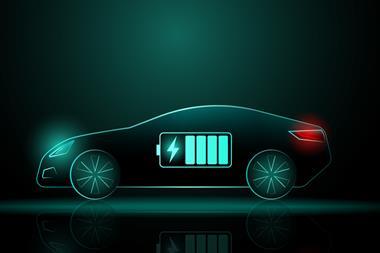
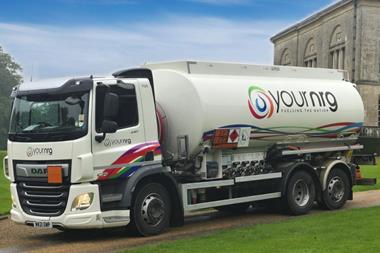


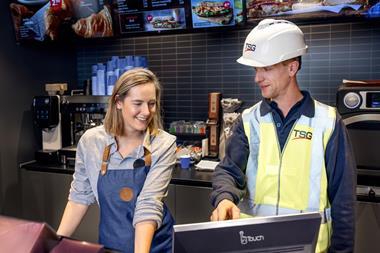



No comments yet